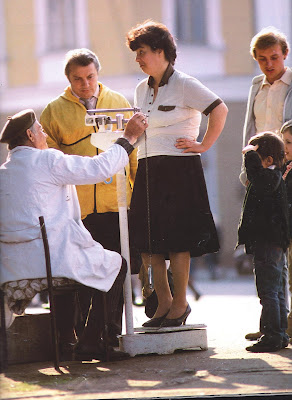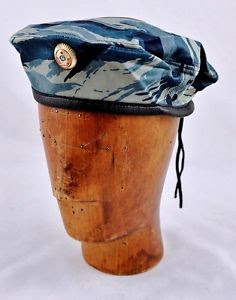Babbo Philipe
A-List Customer
- Messages
- 340
- Location
- San Pedro
wow nico you could fly over to Dans shop
My wallet is happy that I can'twow nico you could fly over to Dans shop
Distance doesnt help, it only makes for more waiting
I plan to holiday in NZ sometime in the future, maybe, just maybe.wow nico you could fly over to Dans shop
 John Lofgren Monkey Boots Shinki Horsebuttt - $1,136 The classic monkey boot silhouette in an incredibly rich Shinki russet horse leather.
John Lofgren Monkey Boots Shinki Horsebuttt - $1,136 The classic monkey boot silhouette in an incredibly rich Shinki russet horse leather.  Grant Stone Diesel Boot Dark Olive Chromexcel - $395 Goodyear welted, Horween Chromexcel, classic good looks.
Grant Stone Diesel Boot Dark Olive Chromexcel - $395 Goodyear welted, Horween Chromexcel, classic good looks.  Schott 568 Vandals Jacket - $1,250 The classic Perfecto motorcycle jacket, in a very special limited-edition Schott double rider style.
Schott 568 Vandals Jacket - $1,250 The classic Perfecto motorcycle jacket, in a very special limited-edition Schott double rider style. Well Daan actually used to have a I see stripes blog , and sold a few Brittany /Telnyashka type shirts from memory ....I know, just couldn't help myself. My daughter suggested a striped shirt next time.
View attachment 86238


A Canadian customer of mine who had traveled in Russia for a month was surprised by the number of berets he saw there, in the cities and the country, worn by both men and women and especially, by people of all ages. He wasn't able to find any in shops though (apart from military berets on markets).
View attachment 86435 View attachment 86436 View attachment 86437
Indeed, berets are, and have always been, very popular in Russia (and formerly in the USSR). There are many small scale manufacturers, but (to the best of my knowledge), none that produce classic Basque berets. The Russian military berets are made of multiple pieces of felted wool, sewn together (versus the one thread knitting of a traditional beret).
View attachment 86430
When I worked in emergency aid in Chechnya and some of the former Soviet Republics like Georgia and Azerbaijan, I found the same way of manufacturing there. In Chechnya berets were typically made of velvet, manufactured in back rooms by women who were happy to have some paying work.
I got a beautiful black and a green velvet "Boivik" (Chechen for "fighter") beret from my friend and bodyguard Isa (RIP).

There used to be a manufacturer of Basque berets before the collapse of the Soviet Union, but so far I haven't found any detailed information, other than that these were made in Ukraine and instead of a cabillou, it had a small loop of felted wool at the center of the beret (see photo below).
View attachment 86429
These days, practically all berets in Russia come from Czech manufacturer FEZCO/TONAK. To me, the difference between ex-Soviet and my North American/European clientele is interesting; Russians embrace these Czech made berets, while I sell very few to my regular customers despite these being of excellent quality at a very competitive price...
View attachment 86433 View attachment 86434
Personaly, with winter ended here in the southern hemisphere and summer not quite here, I find myself wearing my Tartan 11.5" and Czech Classics every day! Next month both models expand with the brown-melange colour of the Carpathian Mammoth Original too.
View attachment 86426
I agree.Two months back I bought a black Tartan 11.5"; now I also have the blue and winter green models (the green a magnificent blend of green loden and grey). Less than 1/2 the price of my top quality French foulard, but these are what I wear most of the time! Try them I say, they're great!
Caught in the rain many times. I kinda like the size now, similar to the Basco Roma.shrunk from what , did you wear it when raining before,
Caught in the rain many times. I kinda like the size now, similar to the Basco Roma.
Shrinkage is inherent to any beret, or any garment made of natural wool, but doesn't occur at the same level from one beret to another.
View attachment 86675 Fulling machines View attachment 86676
Simply said, the denser the felted wool of the beret, the lesser shrinkage. Laulhère’s Tarte Chasseur Alpin is the heaviest, most densely felted beret you could find and has been fulled (a part of the felting and shrinking process during manufacturing) to the extent that there remains very little room for further shrinkage.
Boinas Elósegui’s Super Lujo models and Exposición Año 1858 are lighter in weight than the Tarte Chasseur, but again have been fulled to the maximum, creating a stiffer beret that has minimal shrinkage.
View attachment 86678
Also, the method of knitting has an influence on shrinking; Boneteria Auloronesa knits its berets in a way invented by it's founder that causes minimal shrinkage, a well kept trade secret. This is evident in the leather headbands used for this brand; where most berets are fitted with relatively thick, rigid leather bands to maintain the size of the head-opening against shrinking, Auloronesa's are fitted with a thinner, much suppler and more comfortable leather band.
View attachment 86673 View attachment 86677 View attachment 86674
After prolonged exposure tor rain, it is important to dry your beret; NOT on a direct heat source (so not on a heater, with a hair dryer or in direct warm sunlight!), but in a well ventilated, dry area without direct sun shining on your beret. If you worry about shrinkage (a light density beret), fit a dinner plate the size of your beret inside it while drying - this helps against shrinkage and also maintains the shape of the beret.
Shrinkage is inherent to any beret, or any garment made of natural wool, but doesn't occur at the same level from one beret to another.
View attachment 86675 Fulling machines View attachment 86676
Simply said, the denser the felted wool of the beret, the lesser shrinkage. Laulhère’s Tarte Chasseur Alpin is the heaviest, most densely felted beret you could find and has been fulled (a part of the felting and shrinking process during manufacturing) to the extent that there remains very little room for further shrinkage.
Boinas Elósegui’s Super Lujo models and Exposición Año 1858 are lighter in weight than the Tarte Chasseur, but again have been fulled to the maximum, creating a stiffer beret that has minimal shrinkage.
View attachment 86678
Also, the method of knitting has an influence on shrinking; Boneteria Auloronesa knits its berets in a way invented by it's founder that causes minimal shrinkage, a well kept trade secret. This is evident in the leather headbands used for this brand; where most berets are fitted with relatively thick, rigid leather bands to maintain the size of the head-opening against shrinking, Auloronesa's are fitted with a thinner, much suppler and more comfortable leather band.
View attachment 86673 View attachment 86677 View attachment 86674
After prolonged exposure tor rain, it is important to dry your beret; NOT on a direct heat source (so not on a heater, with a hair dryer or in direct warm sunlight!), but in a well ventilated, dry area without direct sun shining on your beret. If you worry about shrinkage (a light density beret), fit a dinner plate the size of your beret inside it while drying - this helps against shrinkage and also maintains the shape of the beret.